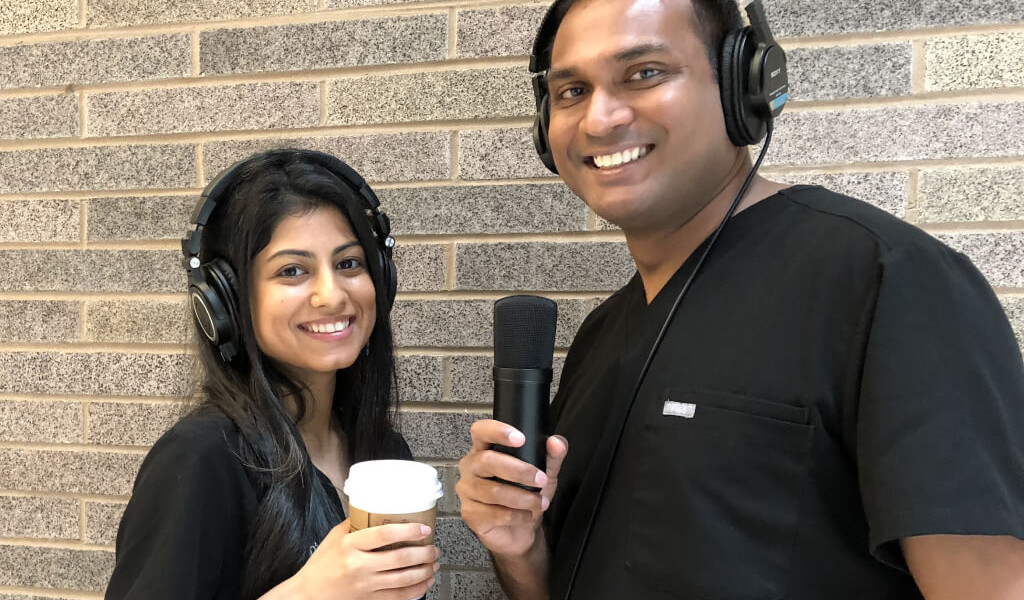Podcast Ep 51: Glioblastoma, Kerion, Antipsychotics, Urine Dipstick, Tetalogy of Fallot, Central Retinal Vein Occlusion

A champion is defined not by their wins but by how they can recover when they fall.
–Serena Williams
Welcome back to RoshCast for Episode 51! For those of you taking the initial certification exam, you’re at the home stretch. Remember to listen to this episode and old episodes as you get closer to the end for more review. Good luck from us at the RoshCast team! We have a great episode for you to get you prepped in your final studies!
Question 1
A 46-year-old man presents with a progressive dull headache over the past 3 weeks. It is worse in the morning and with bending over or coughing. He denies any fever or congestion. For the last two days, he has had associated nausea and three episodes of vomiting. Which of the following characteristics seen on neuroimaging would be most consistent with a glioblastoma?
A. Heterogenous mass with central necrosis
B. Lack of enhancement with administration of contrast
C. Presence of calcifications
D. Well circumscribed margins
Question 2
A 16-year-old African American boy presents with a scalp rash. On examination, it is a 5 x 5 cm boggy and thickened area of the right parietal cap with an overlying scaly and crusty plaque and hair loss. The lesion appears yellowish-green under a Wood’s lamp. What is the treatment of choice for this lesion?
A. Clotrimazole ointment
B. Ketoconazole shampoo
C. Oral amphotericin B
D. Oral griseofulvin
Question 3
A 22-year-old man recently diagnosed with schizophrenia presents to the ED with altered mental status. His blood pressure is 160/80 mm Hg, pulse 130 beats per minute, and temperature is 39.5°C. He is noted to be confused and diaphoretic. He has muscle rigidity and a tremor in his hands. What is the most likely diagnosis?
A. Malignant hyperthermia
B. Neuroleptic malignant syndrome
C. Serotonin syndrome
D. Tyramine reaction
Question 4
A 21-year-old woman presents with painful urination. She has no vaginal discharge and is not sexually active. Which of the following is most sensitive for a urinary tract infection on urine dipstick testing?
A. Bacteria
B. Blood
C. Leukocyte esterase
D. Nitrites
Question 5
Which of the following findings would be consistent with a diagnosis of tetralogy of Fallot?
A. Bounding pulses and a continuous machine-like murmur
B. Decreased pulses in lower extremities
C. Increased pulmonary vascular markings on chest radiography
D. Loud, single second heart sound with a harsh systolic murmur
Question 6
A 73-year-old man presents with painless vision loss in the right eye. Which of the following on funduscopic examination is most characteristic of central retinal vein occlusion?
A. Cherry red fovea
B. Pale retina
C. Papilledema
D. Retinal hemorrhages

- Glioblastoma is the most common primary malignant brain tumor in adults and presents as a heterogeneous mass with central necrosis.
- A kerion is a boggy, pus-filled lesion caused by a fungal infection on the scalp. It is treated with a 6 to 8-week course of oral griseofulvin.
- New antipsychotic medication administration and a presentation of altered mental status, muscle rigidity, hyperthermia, and autonomic instability is classic for the diagnosis of neuroleptic malignant syndrome.
- On urine dipstick, leukocyte esterase is sensitive while nitrites are specific for a urinary tract infection.
- Tetralogy of Fallot is the most common cyanotic congenital heart disease and is associated with a harsh systolic murmur that improves with squatting.
- Central retinal vein occlusion presents with sudden, painless, monocular vision loss with the classic “blood and thunder” appearance and retinal hemorrhages.
That wraps up RoshCast Episode 51! Be sure to also check out the rest of the Rosh Review Blog for questions from prior episodes, related images, and tables, and bonus teaching points. There are also tons of other great free resources to help prepare you for the boards and the wards. Don’t forget to follow us on twitter @RoshCast. And you can always email us at RoshCast@RoshReview.com with any feedback, corrections, or suggestions.
You can also help us pick questions by identifying ones you would like us to review. Write “RoshCast” in the submit feedback box as you go through the question bank. Lastly, if you have a minute, make sure to rate us and leave comments on iTunes to help spread the word about RoshCast.
Megha and Nachi





Comments (0)